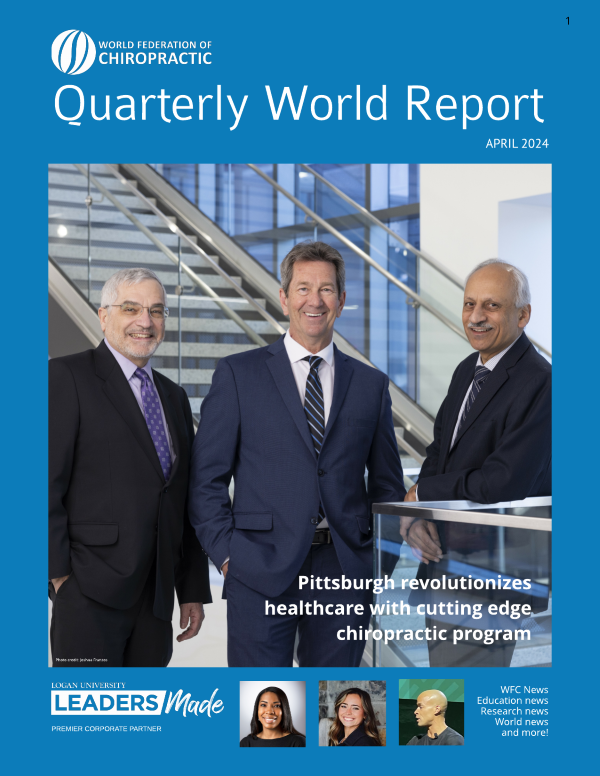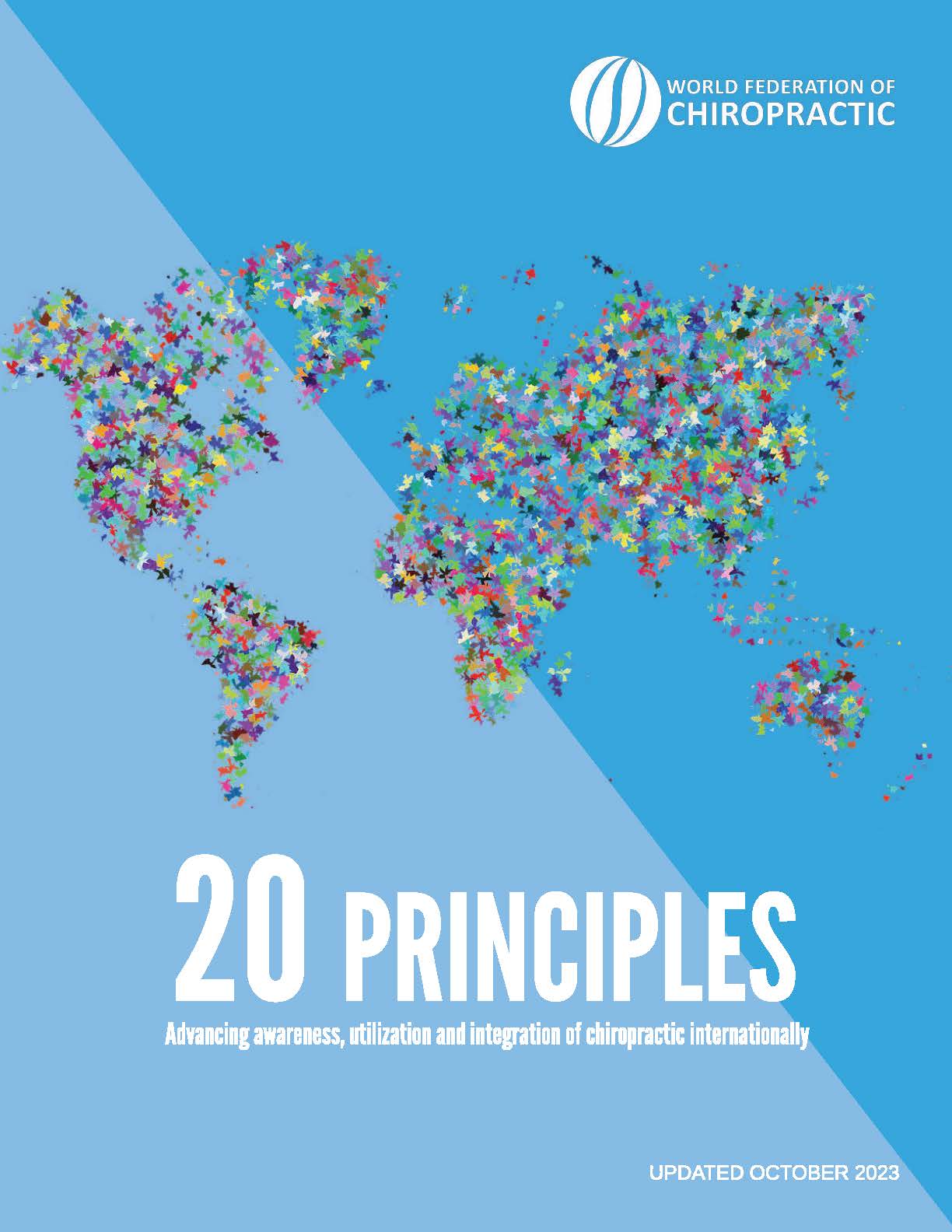Facts on Chiropractic
Introduction
Chiropractic is a health profession concerned with the assessment, diagnosis, treatment, and prevention of disorders of the musculoskeletal system, particularly the spine, and the effects of these disorders on the nervous system and on general health. There is an emphasis on patient education and advice, promotion of self-efficacy, rehabilitation, and manual techniques, including spinal manipulation / adjustment. Chiropractors use a biopsychosocial model of care and when treating patients take into account their needs, beliefs and preferences. They promote core pillars of evidence-based practice, people-centered care, interprofessional practice and collaborative approaches to patient care.
Chiropractic arose as a distinct profession in the United States in the 1890s. Until the 1950s the profession was concentrated in North America and was largely isolated from mainstream health care. In the 1960s and 1970s the foundations were laid for broader acceptance of the profession – improved educational and licensing standards, significant research, research texts and scientific journals, and legal recognition and regulation in all US states and various other countries.
Today, chiropractic is taught and practiced throughout the world and the profession has earned broad acceptance of its services from the public and in national health care systems. It is widely regarded as the leading example of an allied health care discipline reaching maturity and mainstream acceptance. In 2003, WHO published guidelines recommending minimal educational standards for the inclusion and regulation of chiropractic within national health care systems. These benchmarks update the education standards in response to evolving needs of health systems and expectations of patients and the public.
Practice
The practice of chiropractic focuses heavily on the biopsychosocial model of care, taking into account the biomedical, psychological and social components of health. This holistic approach reflects a shift in the way that society views health and well-being. There is an emphasis on the structure and function of the musculoskeletal system and its relationship with the nervous system. Chiropractors take a non-surgical, non-pharmacological approach to care, which features a package of care that often features manual therapy interventions.
Practice analyses have demonstrated that the primary reasons patients consult chiropractors are back pain, neck pain, headaches, and other musculoskeletal disorders, all of which feature strongly in successive Global Burden of Disease studies in terms of Years Lived with Disability (YLDs). Patients may also present with symptoms mimicking other health conditions, such as pseudoangina and digestive dysfunction.
Chiropractors are trained to manage patients using a suite of evidence-based interventions. These include education and advice, the prescription of exercise, physical therapies (including spinal manipulation, mobilisation, and soft tissue techniques) and multicomponent interventions related to overall health and well-being. They may work as sole practitioners or as part of multidisciplinary health facilities including hospital-based care. As experts in the provision of rehabilitation, chiropractors will work alongside other providers to deliver interventions that help optimize functioning and reduce disability in patients with health conditions.
Interdisciplinary practice is now common, with chiropractors working alongside medical doctors, neurological and orthopaedic surgeons, physiotherapists, occupational therapists, and exercise professionals. Chiropractors are involved in teams providing care for older people, children, amateur and elite athletes and in occupational settings.
Law
The practice of chiropractic is regulated in approximately 40 countries around the world, either through primary legislation, secondary legislation or pursuant to common law. Over eighty per cent of chiropractors practising worldwide are subject to statutory regulation. Features of legislation common to the practice of chiropractic are:
- Protection of title – regulations to prevent unqualified persons from using the title chiropractor or a derivative thereof.
- Primary contact – patients may consult chiropractors directly without the need for medical referral.
- The right and duty to diagnose – chiropractors are required to formulate a diagnosis after obtaining and full history, undertaking and physical examination and, where appropriate, undertaking additional investigations such as diagnostic imaging and laboratory tests.
- Fitness to practice procedures – systems are in place to investigate complaints and take action against those found guilty of misconduct, professional incompetence or those deemed unfit to practice on health grounds.
- Continuing education – the requirement to stay up to date and undertake professional development activities.
Education
There are over 50 educational institutions worldwide providing programs of chiropractic education. Programs may be housed in public universities, private universities, or independent colleges. Common standards of education have been achieved through international accrediting agencies, the first of which, the U.S. Council on Chiropractic Education, was established in 1974. Accrediting agencies may a statutory or non-statutory and through a structured program of assessment of curriculum content and competencies they assure quality and consistency is delivered between programs.
Entrance requirements vary according to jurisdiction. In North America, a minimum of three years university credits in qualifying subjects are required, whereas in Europe students are accepted directly into programs without the need for an undergraduate degree. Chiropractic programs typically comprise between 4 and 6 academic years, and result in a Masters degree or equivalent in many countries. Postgraduate clinical training and/or licensing exams are required in some countries. Postgraduate specialties include chiropractic sciences, orthopedics, pediatrics, neurology, diagnostic imaging, rehabilitation and sports chiropractic.
Before the expansion of chiropractic education, most chiropractors qualified from North American educational institutions (U.S. and Canada). However, degree-level training programs are now offered in Australia, Brazil, Denmark, France, Japan, Malaysia, Mexico, New Zealand, South Africa, Spain, Switzerland and the United Kingdom.
Research
Chiropractic is a profession, not a treatment. Chiropractors utilise a package of care using a range of evidence-based interventions, that are supported by research and included in national and international guidelines.
Chiropractors are involved in active research programs around the world, including at Harvard, Yale, Stanford and Duke Universities in the United States; at Queens University, Ontario Tech, and the Universities of Alberta and Toronto in Canada; at the University of Johannesburg and Durban University of Technology in South Africa; at the University of Southern Denmark in Denmark; at the University of Zurich in Switzerland; and at Macquarie University in Australia. Research departments at chiropractic educational institutions consistently add to the body of knowledge relating to the work undertaken by chiropractors. Chiropractic researchers regularly publish in high quality, peer reviewed medical journals and work within and in association with some of the most prestigious research teams, contributing to national and international guidelines and publications from WHO.
Significant evidence exists to support the interventions most commonly delivered by chiropractors. Physical therapies, including spinal manipulative therapy and soft tissue mobilisation and massage are evidence-based interventions for the treatment of chronic low back pain, the single greatest cause of years lived with disability. Approaches utilised by chiropractors in the rehabilitation of spinal and joint pain and disability feature in WHO Guidelines and include education and exercise recommendation and prescription. Research further supports multicomponent approaches to care; with chiropractors contributing to multidisciplinary, integrated approaches to the management of musculoskeletal disorders.
Integration
In a number of countries, chiropractic services are now largely or fully integrated with medical and other mainstream health care services. At the University of Southern Denmark and the University of Zurich, chiropractic and medical students complete their first three years of study of basic sciences together before branching into their separate clinical training.
In the United states, chiropractic services are now available in the military and veterans’ administration hospital and health care systems, and through Harvard University’s health care network.
Featured Videos
Search
Click here to see complete Corporate Partners List











